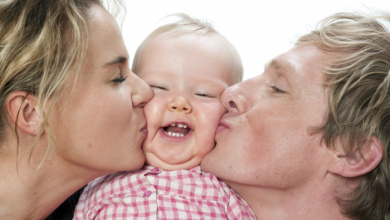
Do you ever get worn out by a child who is busy, busy, busy?
If you’re a low-energy parent raising a high-energy child, you already know that the combo can leave you exhausted and your child stifled. What to do?
In this episode, Carol and Anne help you better understand your extroverted child. Their 3 simple tips will help both you and your child get when you need, so that life and parenting feel more balanced.
This episode’s Parenting Practice
If parenting is wearing you out, or things are feeling out of balance with your child, listen to this episode and choose one tip to apply. Trust that you are capable of creating more balance and harmony, so that you can be the parent that you want to be for your children.
Transcript of podcast episode
Carol: “We’re going to go do this right now. We’re going to literally go get in the car right now and go do this.” Do you know how enthusiastic a Type 3 would be and a Type 1? “Really? What happened to my mother? Somebody else is, somebody switched with her.” Welcome to The Child Whisperer Podcast. I’m your host, Carol Tuttle, author of the bestselling parenting book, The Child Whisperer. I’m with my co-host Anne Tuttle Brown.
Anne: I’m a Type 4 and I’m having a very, very hard time with my three-year-old son’s Type 1 energy. He’s busy, busy, busy all the time and never stops talking. He asks me to do this and that constantly, to the point I can’t do housework or even cook when he’s around, our energy just seems to do nothing but clash. I’m so ashamed of this because I love him to death, but I’m scared that it will never change.
Carol: Well, first of all, she’s going a little far out.
Anne: Well she’s Type 4. It’s all or nothing.
Carol: He’s three. So, this is an example of an introvert Energy Type that’s now raising an extrovert Energy Type and there’s a little different look at introvert/extrovert in the Energy Profiling world. And I’ll just briefly tune you in to how I see it. It’s not about a social skill. I think we tend to think of, “I’m an introvert, I’m an extrovert,” based on how social are you. In the world of Energy Profiling, you have an outward moving energy or an inward moving energy. For example, Type 1 and 3 have an outward expression first where they express outwardly in their movement in the world and a Type 2 and a Type 4 go within first. They go within either to their emotional experience or into their minds. And so in her case, she has a much higher movement human being that she’s raising than she is. So, a Type 4 mom requires more stillness, quiet, less movement…
Anne: More structure.
Carol: …more structure. A Type 1 child is looking for more spontaneity, social interaction, playful quality of life, upward light movement. And so, this tells me right away if Mom’s the only resource for that, it’s she’s a stay-at-home mom, this child only has the mom for supporting that need for stimulation, that’s going to be a problem, that’s going to wear Mom out. Because what’s going to happen is her inability to match it will actually create a stronger need for it in the child, so it’s excessive.
Anne: He’s likely starving for it.
Carol: Yes. It’s sort of like it’s over and over too much.
Anne: Asking, asking but not getting anything. Yeah.
Carol: Because there’s not enough offered in a healthy way that he can hit a place of balance.
Anne: That’s a good indication that things are out of balance. The mom is so drained, feeling guilty, grumpy, impatient.
Carol: She apparently thinks she needs to be the one to meet him there. She can’t. That’s the first thing you have to know is, guess what? The way your human nature is, you’re not going to match your extrovert child’s human nature. It has nothing to do with… You’re the better parent by acknowledging that and making up the difference in other ways.
Anne: You don’t have to be everything all the time.
Carol: You really are the better parent. You can’t be. It’s an unreasonable expectation that will put you in this position of saying, “Oh no, is this the way it’s going to be? I can’t do this for the rest of this child’s growing years.” It’s like, well then what you’re doing isn’t working because it can work that you can be your Type 4 self. Make sure your needs are being met, and then make sure you’re Type 1 child’s needs are being met and you’re a part of that on occasion, but there are other things you can put into place.
Anne: Time to take a short break, but don’t worry, we’ll be right back after this.
Woman: Knowing your Type and your child’s Type changes everything doesn’t it? It helps you to understand one another better. It can help your outside too. When you wear clothes that express your type, you feel better, you look better and people understand you more easily, including your kids. Carol Tuttle created the Dressing Your Truth program, to help you dress true to your type and create a personal style that expresses who you really are. The best part, you can learn all the basics for free. Start loving how you look and feel at dressingyourtruth.com.
Anne: Instead of guilting yourself or getting upset for not being able to be what you want…you think your child needs or feeling grumpy or impatient, you need to take a closer look at how your needs are not being met. As a Type 4, you need alone time, as a Type 2 you need that quiet time. These are very important in helping you become healthy parents so you can show up for your children. So we’ve suggested noise-canceling headphones or muffling headphones if it’s a loud, noisy environment. Getting some help that you can have a break from your child. You can go to the grocery store by yourself if that sounds therapeutic to you.
Carol: Yeah, I’d hire the Type 1, 12-year-old boy in the neighborhood and pay him to play with my Type 1, 3-year-old toddler.
Anne: Or take him to the park. So, she said, I’m not able to get any housework done, so she’s bogged down too much.
Carol: But see how easy it would be to hire a Type 1 mother’s helper. Their job is to come in and say, “I’m going to pay you for three hours of playing with…” A Type 1 can play two to three hours with a Type 1. They would have fun and they’re like, this is awesome. I’m getting paid to play.
Anne: I’m all for mother’s helpers.
Carol: Yes, we have a lot of names for that: nannies, babysitters. You don’t necessarily have to leave, but you’re giving that child the support they need by someone to interact with, to have some fun with, to be creative with. Do they have play dates in place? Are they getting out of the house and other environments and having social experiences? Do they have… Three-year-olds can go to preschool. Are they being stimulated with outside activities that you get to say, bye, see you later?
Anne: Like you said, if this is overstimulation because the child is not getting what he needs, when he comes home, you may find that you have a much more settled…grounded child.
Carol: You’ve met the need.
Anne: Spending time with you.
Carol: Just like you said, they’re starving, you feed them, they’re not hungry anymore, so they’re now at peace. They’re balanced.
Anne: The next tip is for planning spontaneity. So Type 2 and a Type 4, we like our plans. You like a good plan, but your child can want something else and they want it right now and so practicing yes a little more often, when your child wants to get messy or have friends over and schedule more spontaneous time. Windows of time where you don’t have plans, the day can kind of take its flow and you can think of something, your child can suggest something and you can act on it a little more freely.
Carol: They’ll think it’s spontaneous. You’re in your mind, you’re like, “Ha-ha-ha. I planned this all along.” But the Type 1 and Type 3 children, even at this early age, they need to get out and about. They need to see the world, interact with the world, interact with the people of the world, interact with the adventure of the world. And so, staying contained in a home, you know, all day can create this excessive need. It makes the Type 1 child what we’ve described in that question to just be sort of like, play with me, play with me, you know, do something with me. A Type 3 child will just start getting into things and get very demanding.
Anne: But it feels stifled. And it will come out in their pent-up energy. It’s very comfortable for Type 2s and Type 4s to stay home more frequently than those extrovert energies. And so planning like we’ve talked about, getting help to plan, but also just in your plan, I love that idea, plan for spontaneity.
Carol: Yeah. That’s fun, you’re like, “Okay, on Thursday…” It’s like Sunday and you’re planning Thursday, “I’m going to out of nowhere say to the kids, all right my Type 1 and Type 3 children…” You know, maybe you leave the other kids by themselves if they’re old enough because maybe the Type 2 and the Type 4 children if you have those, so you’ve got to kind of look at that as well to say I need to support my more extrovert child by like going, “We’re going to go do this right now. We’re going to literally go get in the car right now and go do this.” Do you know how enthusiastic a Type 3 would be and a Type 1? “Really?” Big fight. “What happened to my mother? Somebody else is here, somebody switched with her.”
Anne: That’d be really fun to see that in action.
Carol: “She’s usually putting me off.” That’s where you enroll your grandparents too if you have them or someone that’s a relative or a good friend that doesn’t have their own children. There are ways to enroll people that are kind of your support system that enjoys being with your kids, especially if they are an extrovert type as well. Who do you know that’s a Type 1 or a Type 3, maybe it is grandparents, aunts, uncles, maybe it’s a cousin that’s older. Let them play that role.
Anne: Maybe it’s the mom and not the dad. You know, I’m going to stay home and… take the kids out.
Carol: Then dad takes the kids out. They’re able to match your children better than you are.
Anne: This goes into the next tip, which is you need to give both of yourself space and breathers. And so whether you’re staying at home or you’re in your room and they’re in their room, make sure that you’re planning that time to disconnect, to recharge, and I do this with my children. We have quiet time and I’ll let my Type 3 child stay in her room and do whatever she wants. As long as she’s in her room, she can have music on. My quiet time looks different. It’s more quiet, it’s more, you know, focused. So creating time where you can separate, that is really healthy as a parent-child. And then the last tip is to experience the best by assuming the best. Know that when your more extroverted children express their big energy that they’re not trying to put you out or get under your skin. They’re just expressing who they are in the way that they know how.
Carol: Yeah, we have a really firm rule in the Child Whisperer Facebook group that you cannot post with the language of “My Type 3 child is killing me. I’m so exhausted.” You can’t, like, put it in a phrase that makes it sound like your child has an intentional effort to make your life miserable. But we get a lot of these declarative like really drama commentary and I’m like, you can’t say that because your child has no intention to do that. And what it’s showing you is, there’s an imbalance that can be corrected. You need to take some steps towards that and make some different decisions. And some of it may cost you some money, but if you keep…
Anne: And planning.
Carol: Yeah, planning and follow through and getting the right people involved, and if you think somehow that you’re less of a parent because you’re not able to match your child 24/7, that is a misunderstanding.
Anne: I think ultimate…
Carol: That’s a flawed belief.
Anne: All of these tips I think point at the same solution which is, more me time. And you could perceive that as being selfish or, but that is going to help you show up…
Carol: You are the better parent for knowing that, in my opinion.
Anne: Yes. So, we’ve given plenty of ideas of how to create that time. And what you do in that time will be more of those introverted activity.
Carol: Right.
Anne: And so make sure that you…and this is your parenting practice. If things are feeling out of balance, you’re feeling exhausted and anxious, then what tips can you use from what we’ve shared today to create more balance and harmony so you can show up and be the parent that you want to be for your children?
Carol: I think the key phrase I hear is “My child is driving me crazy.” So if that’s running through your mind or if you’ve said that to anyone lately, there’s some changes you need to make. So parenting practices make those changes.
Thanks for listening. For more support and go to thechildwhisperer.com where you can purchase the book, subscribe to our weekly parenting practice email and find a transcription and audio of The Child Whisperer podcast.
Anne: If you’re listening on iTunes, thank you for leaving a review. If you have a parenting question, please send it to [email protected].



